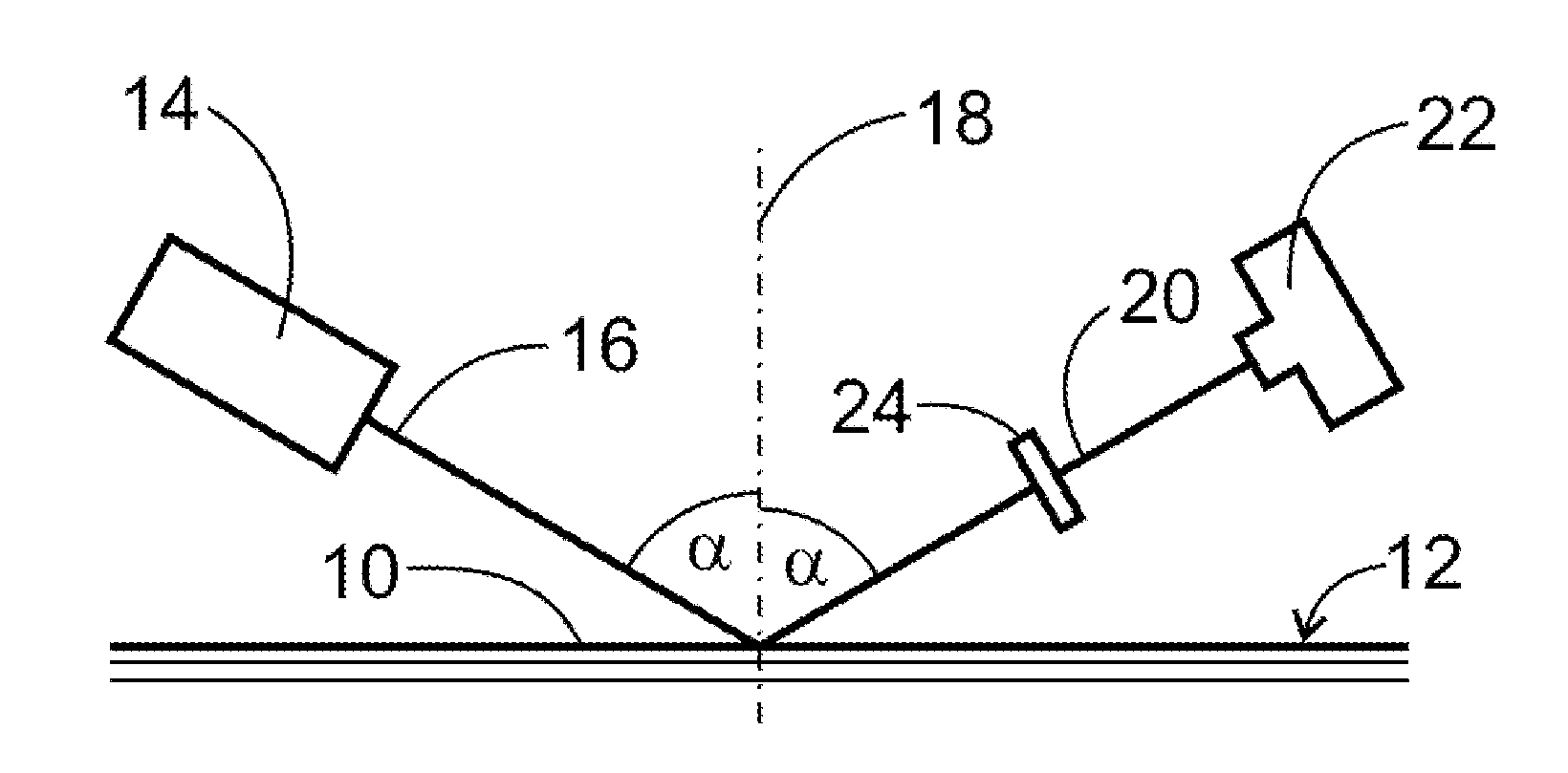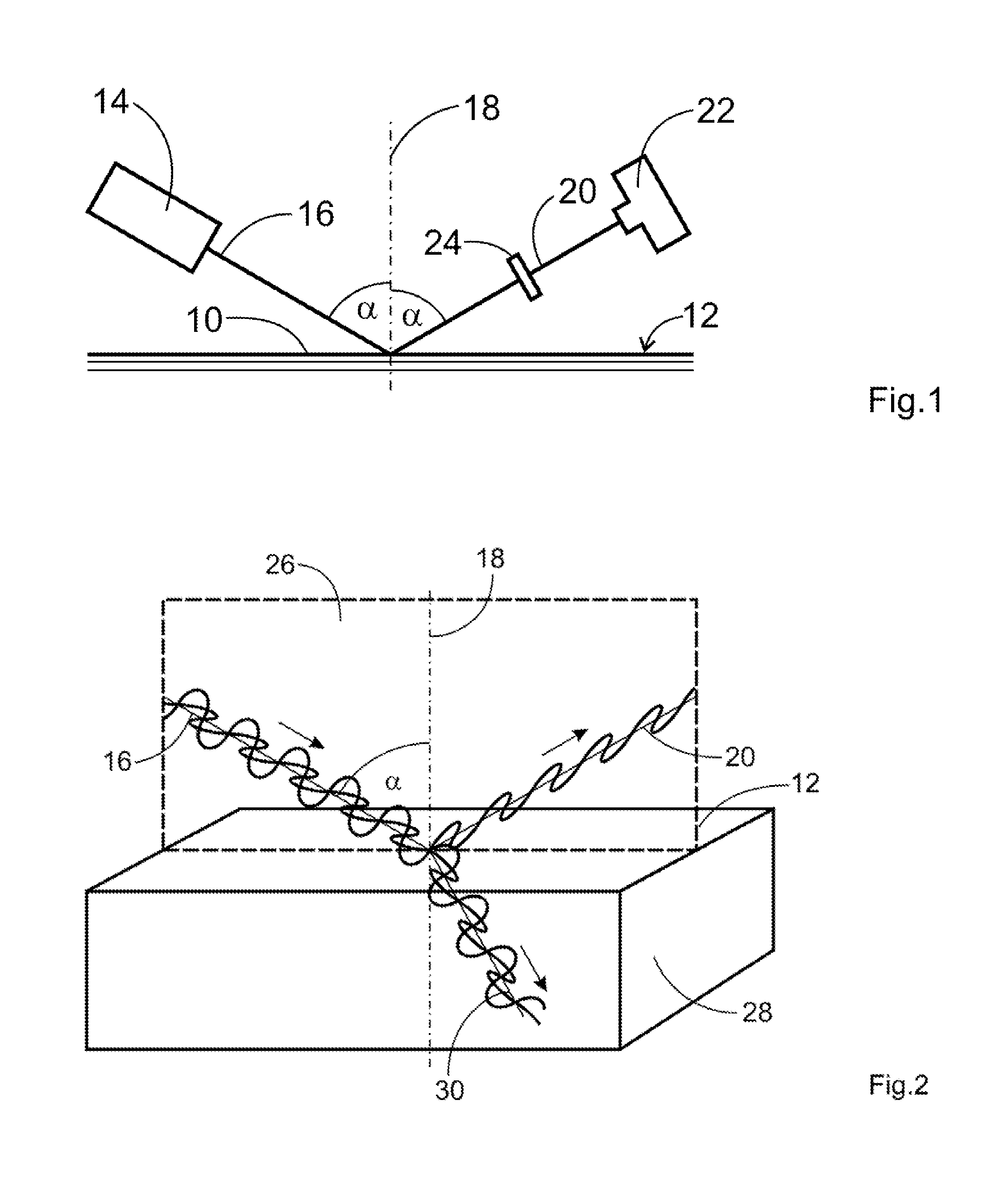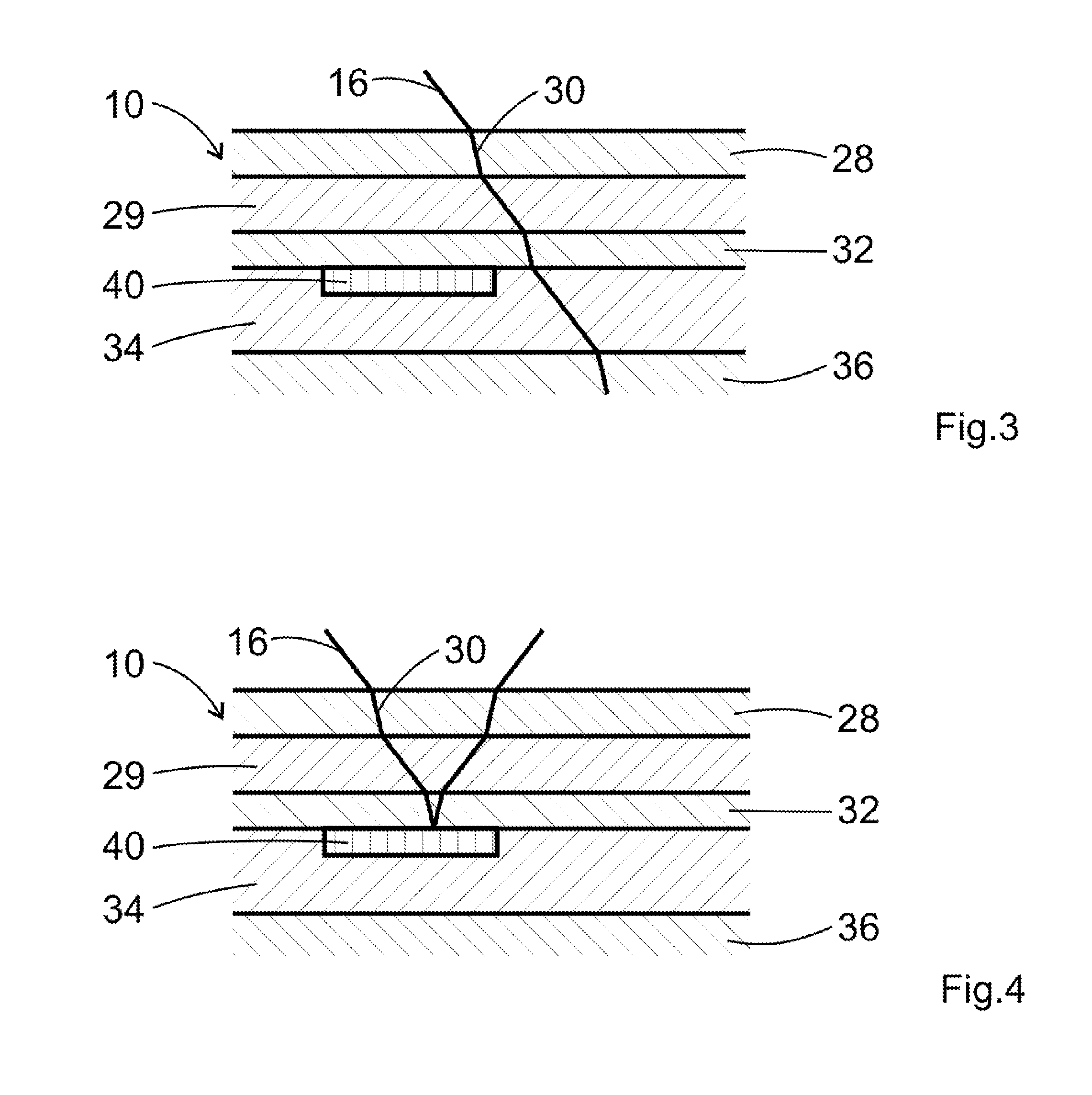Method For Detecting Buried Layers
a technology of optical detection and buried layers, applied in the direction of material testing goods, instruments, testing semiconductor materials, etc., can solve the problems of high accuracy, high accuracy, and inability to meet the requirements of high throughput, and achieve high speed
- Summary
- Abstract
- Description
- Claims
- Application Information
AI Technical Summary
Benefits of technology
Problems solved by technology
Method used
Image
Examples
Embodiment Construction
[0038]FIG. 1 shows an object generally designated with numeral 10. In the present embodiment the object 10 is a wafer with a silicon substrate 28, 32, and 36 having several vertically stacked, air-filled spaces 29 and 34. The spaces 29 and 34 are separated from each other by small layers 32 and 36 of silicon as can be seen in FIGS. 3 and 4. Due to production conditions in some of the spaces 29 and 34 defects can occur in the form of silicon oxide layers 40. This corresponds to the negative check.
[0039]Each of the materials, i.e. silicon, silicon oxide and air are defined by their refractive index nx. The refractive index of the uppermost layer 28 of silicon is 3.5. The refractive index of the air layer 29 therebelow is 1.0. FIG. 1 schematically illustrates the measuring assembly. The surface 12 of the object is illuminated with infrared radiation 16 from an infrared radiation source 14, In the present embodiment broad band radiation from the wavelength range between 1.1 microns and ...
PUM
 Login to View More
Login to View More Abstract
Description
Claims
Application Information
 Login to View More
Login to View More - R&D
- Intellectual Property
- Life Sciences
- Materials
- Tech Scout
- Unparalleled Data Quality
- Higher Quality Content
- 60% Fewer Hallucinations
Browse by: Latest US Patents, China's latest patents, Technical Efficacy Thesaurus, Application Domain, Technology Topic, Popular Technical Reports.
© 2025 PatSnap. All rights reserved.Legal|Privacy policy|Modern Slavery Act Transparency Statement|Sitemap|About US| Contact US: help@patsnap.com



